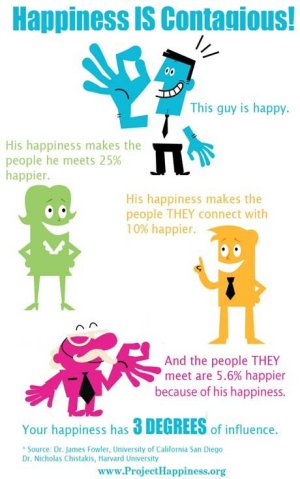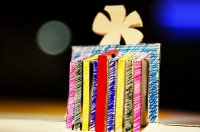Building Social and Emotional Skills in Elementary Students: Share Your Gifts
We're excited to present this final post of the nine-part series from the Project Happiness elementary school curriculum. Within this series, we've taught important factors that have been proven to enhance the happiness and social and emotional learning of elementary school age children, giving them a significant advantage for life. Each blog has featured one letter of the acronym HAPPINESS:
- H = Happiness
- A = Appreciation
- P = Passions and Strengths
- P = Perspective
- I = Inner Meanie/Inner Friend
- N = Ninja Mastery
- E = Empathy
- S = So Similar
- S = Share Your Gifts
This blog is about Sharing Your Gift.
Who is the teacher that you remember most in your life? Chances are that she or he saw something special in you and encouraged you to develop that gift and share it. I had one such teacher, and I remember her to this day -- she made a huge difference in my life. Every adult who can help kids not only to identify their gifts, but also to share them, is planting powerful time-release seeds for their future.
For students, the act of sharing their unique gift is important in several ways:
- It helps them expand on areas in which they are intrinsically strong, which gives a big boost to motivation.
- It can connect them with new people in their school or community through service learning. A child is never too young to instill the value of pro-social behavior.
- It deepens a sense of meaning and purpose for the individual. Children see that they are capable of "being the change." What they are sharing makes a difference -- they matter. What if every child knew that at a young age?
Your Authentic Self
Another important aspect of sharing one's gift is engagement. While expressing their authentic selves, students make meaningful connections and help others in the process. Win-win-win!
But let's make a distinction. This is not about simple community service, like collecting cans of food for homeless families during the holidays, although that is critically important in its own right. This is slightly different. When students are challenged to solve a problem they find relevant, and when they are encouraged to do so creatively, this opens new possibilities. This is about kids tapping into their talents and passions and having permission to express that part of themselves in a way that:
- Builds on their strengths
- Encourages initiative and critical thinking
- Helps develop resilience
- Promotes cooperation and respect for others
- Celebrates creative approaches to problem solving
- Has personal relevance to their own lives
When students are sharing their gifts, they are in the flow. This is project-based learning at its best! One great tool to help identify individual strengths is Howard Gardner's theory of Multiple Intelligences. Try to inspire students to use their unique intelligences to benefit others -- even small, altruistic acts can have big ripple effects.
Helping Others Makes You Happy
While expressing your authentic self is key to enhancing happiness, helping others as you do so takes you to the next level. In fact, neuroscientists James Rilling and Gregory Berns from Emory University have shown that helping others switches on the same areas of the brain as when a person is receiving a reward or feeling pleasure. To feel good, do good! There is no cost for this pro-social expression of one's gift, and it provides the giver with a joy that he or she can come back to, creating a positive loop effect. Because expressing kindness feels so good, it often makes you want to do it again.
Consider having your students think of an activity where they can use their gifts and passions to make a difference.
Empowering the Inner Life Through the Outer World
"Share Your Gifts" is the culmination of this nine-part series, as it incorporates the social and emotional skills from all the lessons before. We've taken you from teaching students to do daily appreciations to reframing their perspective, through shifting their mindset from "inner meanie" to "inner friend" and building on their strengths. And we've seen that, as students express their inner lives in their outer world, they grow as individuals and add to the greater good. If they can learn to share what makes them unique and special at a young age, they will have a big advantage in:
- Developing self-awareness
- Experiencing their capacities to help others
- Feeling that they are living a happy and meaningful life
Happiness is Contagious
On a final note, have you considered that simply cultivating a state of happiness can be considered pro-social behavior? Research shows that your happiness can bring out the best in others and is contagious to the third degree.

What are you doing to inspire your students to share their gifts? What are you doing to make your classroom a happier place? By adopting happiness as a skillset and enhancing social and emotional learning, your classroom, your students and their families can become forces of positive influence in the world around them. Just for a moment, imagine the possibilities . . .
